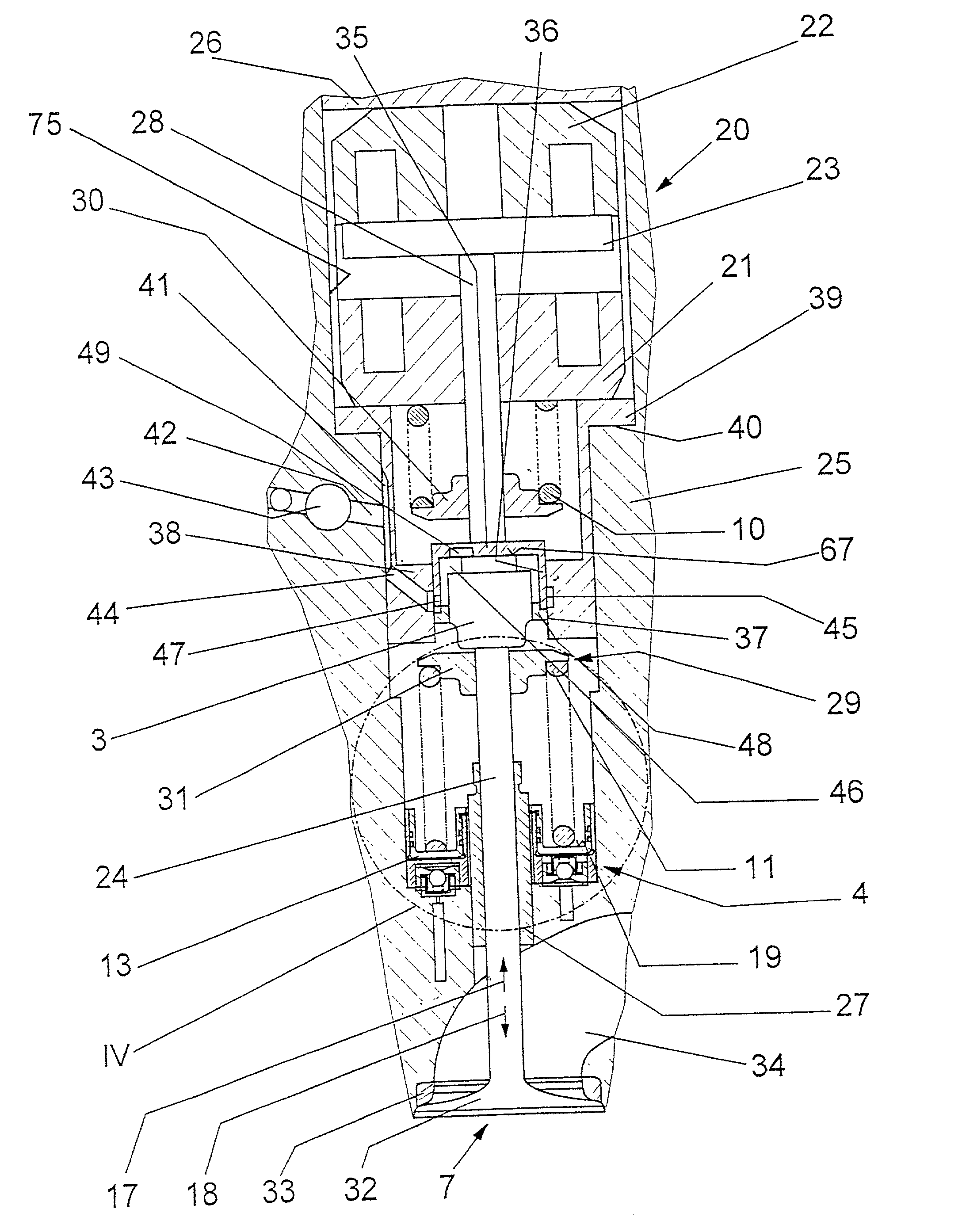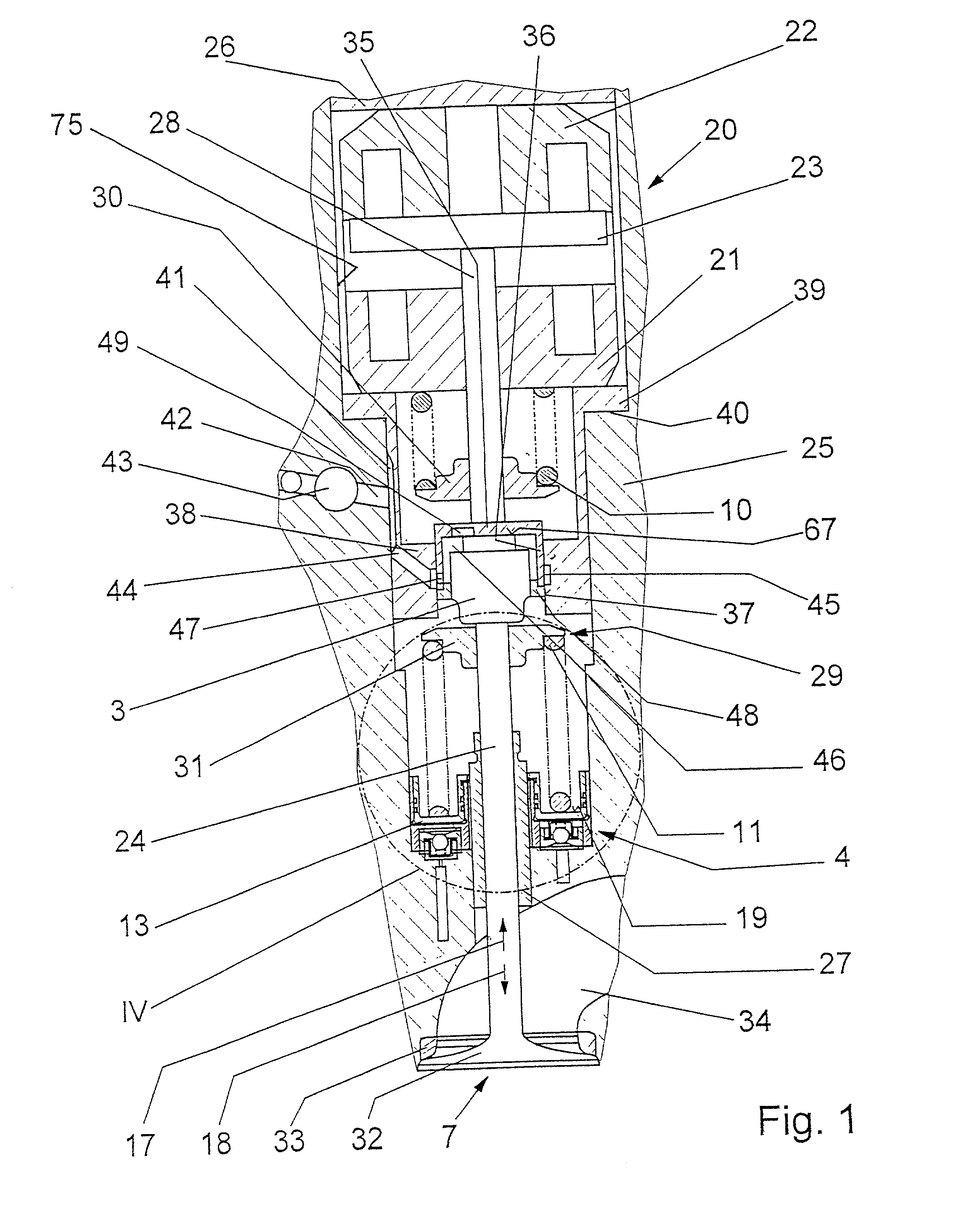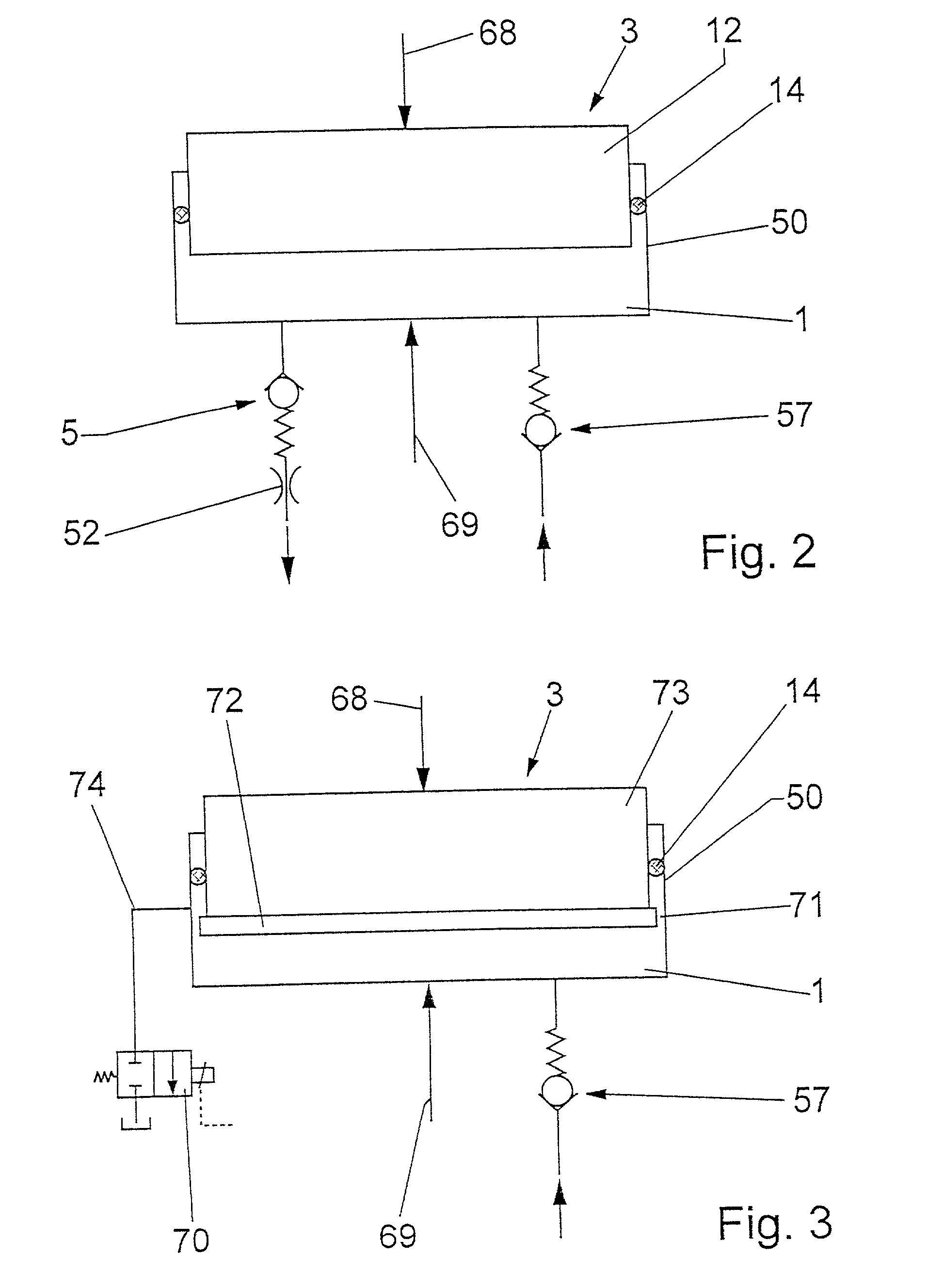Device for actuating a gas exchange valve
a technology for gas exchange valves and actuators, which is applied in the direction of non-mechanical valves, electrical control, machines/engines, etc., can solve the problems of armature not bearing with constant closing, destroying the valve seats, and unable to fully support the armature against the pol
- Summary
- Abstract
- Description
- Claims
- Application Information
AI Technical Summary
Benefits of technology
Problems solved by technology
Method used
Image
Examples
Embodiment Construction
[0028] An electromagnetic actuator 20 is embedded in a recess 75 in a cylinder head 25, which recess is closed by a cylinder-head, cover 26 (not illustrated in further detail). The actuator 20 operates a gas exchange valve 7, which is guided by its valve stem 24 in the cylinder head 25 by means of a valve-stem guide 27. The actuator 20 has two operating magnets, specifically an upper closing magnet 22 and a lower opening magnet 21. An armature 23, which acts on the valve stem 24 of the gas exchange valve 7 via an armature tappet 28, moves between the pole faces of the operating magnets 21 and 22.
[0029] A spring housing 29, in which a spring mechanism comprising two valve springs 10 and 11 is accommodated, is provided between the opening magnet 21 and the gas exchange valve 7.
[0030] The upper valve spring 10 acts with one end in the valve opening direction 18 on a spring disc 30, which is movable by the gas exchange valve 7, and is supported at the other end by the opening magnet 21....
PUM
 Login to View More
Login to View More Abstract
Description
Claims
Application Information
 Login to View More
Login to View More - R&D
- Intellectual Property
- Life Sciences
- Materials
- Tech Scout
- Unparalleled Data Quality
- Higher Quality Content
- 60% Fewer Hallucinations
Browse by: Latest US Patents, China's latest patents, Technical Efficacy Thesaurus, Application Domain, Technology Topic, Popular Technical Reports.
© 2025 PatSnap. All rights reserved.Legal|Privacy policy|Modern Slavery Act Transparency Statement|Sitemap|About US| Contact US: help@patsnap.com



